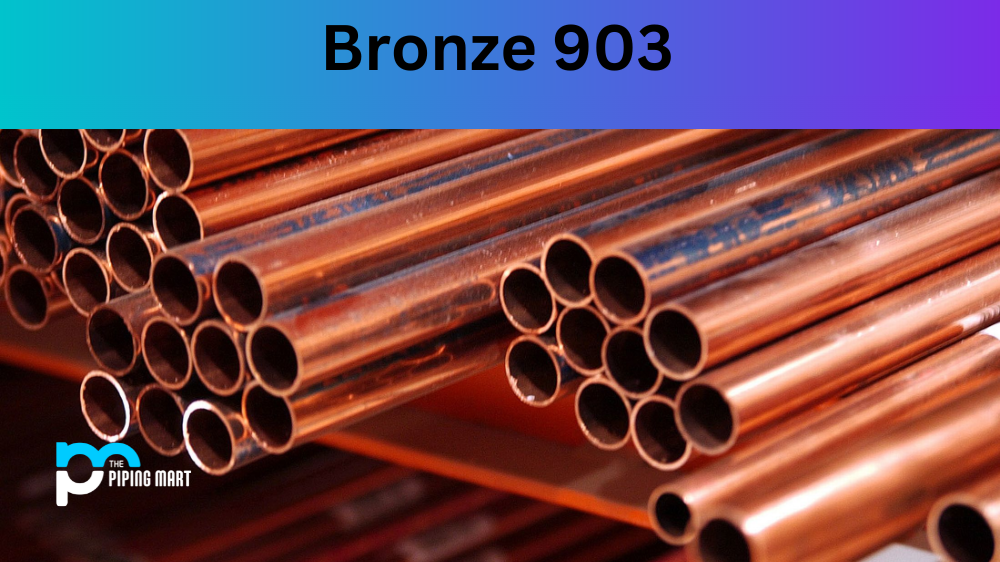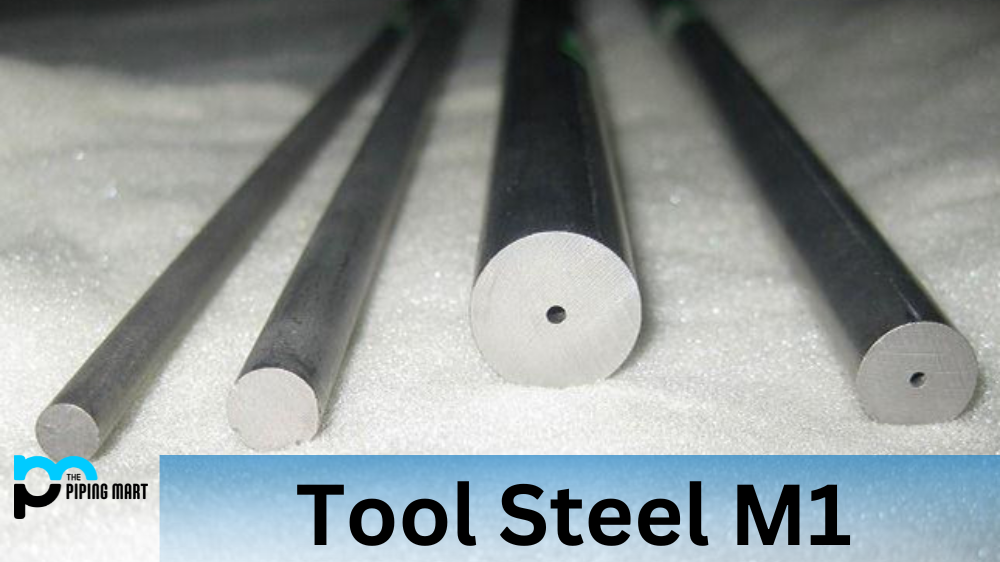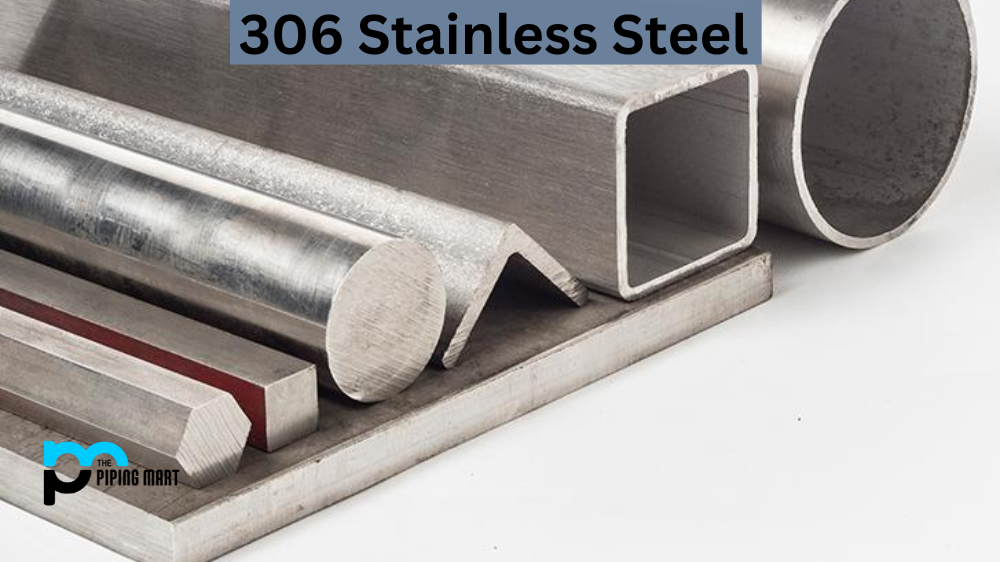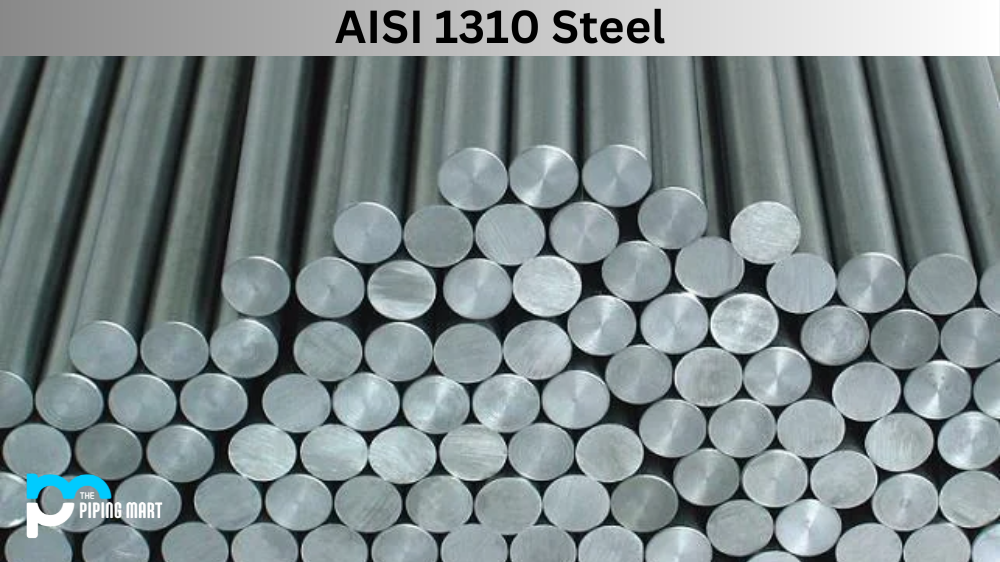C90300 is a metal alloy with a wide range of applications across many industries. It is composed of copper, aluminium, and nickel and is known for its excellent corrosion resistance, high strength, and low friction. In this blog post, we will take a deeper look at the composition, chemical properties, mechanical properties, physical properties, uses corrosion resistance, heat resistance, heat treatment, machining, and welding of UNS c90300
903 Bronze Chemical Composition
C90300 is composed primarily of copper (90%), aluminium (3%), and nickel (7%). This combination creates an alloy with excellent corrosion resistance and high tensile strength. Adding nickel to the alloy also helps reduce wear and tear on components during operation.
| Cu%1 | Pb% | Sn% | Zn% | Fe% | P%1,2 | Ni% | Al% | S% | Sb% | Si% | |
|---|---|---|---|---|---|---|---|---|---|---|---|
| 86.00- 89.00 |
0.30 | 7.50- 9.00 |
3.00- 5.00 |
0.20 | 0.05 | 1.00 | 0.005 | 0.05 | 0.20 | 0.005 | |
903 Bronze Chemical Properties
When exposed to seawater or other corrosive environments, the copper content in C90300 acts as a barrier that prevents corrosion from seeping into the metal’s inner layers. This makes it ideal for use in coastal areas or other areas prone to heavy moisture or humidity. Additionally, uns c90300 has excellent resistivity against acids used in industrial processes such as electroplating or pickling operations.
903 Bronze Mechanical Properties
The mechanical properties of C90300 make it suitable for various applications where strength and durability are important factors. It has a high tensile strength (up to 900 MPa), good fatigue strength (up to 500 MPa), good creep resistance (up to 400 MPa), good wear resistance (up to 250 MPa), excellent impact toughness (up to 40 J/cm2), good electrical conductivity, an excellent thermal conductivity, and an elasticity modulus up to 180 GPa. These characteristics make it suitable for use in valves, pumps, bearings, bushings, gaskets, fasteners, gears, shafts, rods etc . which require high levels of wear resistance or shock absorption.
| Tensile Strength, min | Yield Strength, at 0.5% Extension Under Load, min | Elongation, in 2 in. or 50 mm min | Brinell Hardness (500 kg load) | Remarks | ||
|---|---|---|---|---|---|---|
| ksi | MPa | ksi | MPa | % | typical BHN | |
| 44 | 303 | 22 | 152 | 18 | 70 | |
903 Bronze Physical Properties
UNS c90300 has a density between 8-8.4 g/cm3, giving it an overall lightweight profile compared to other metals such as steel. This, combined with its excellent thermal conductivity, makes it especially useful for applications where weight savings are beneficial, such as automotive parts or engine components. Additionally, this alloy exhibits very good machinability making it easy to work with when fabricating parts out of this material.
| US Customary | Metric | |
|---|---|---|
| Melting Point – Liquidus | 1832 °F | 1000 °C |
| Melting Point – Solidus | 1570 °F | 854 °C |
| Density | 0.318 lb/in3 at 68 °F | 8.80 gm/cm3 at 20 °C |
| Specific Gravity | 8.8 | 8.8 |
| Electrical Conductivity | 12% IACS at 68 °F | 0.069 MegaSiemens/cm at 20 °C |
| Thermal Conductivity | 43.2 Btu/sq ft/ft hr/°F at 68 °F | 74.8 W/m at 20 °C |
| Coefficient of Thermal Expansion 68-392 | 10 · 10-6 per °F (68-392 °F) | 17.3 · 10-6 per °C (20-200 °C) |
| Specific Heat Capacity | 0.09 Btu/lb/°F at 68 °F | 377.1 J/kg at 20 °C |
| Modulus of Elasticity in Tension | 14000 ksi | 96527 MPa |
| Magnetic Permeability | 1 | 1 |
903 Bronze Thermal Properties
| Treatment | Value* | Time** |
|---|---|---|
| Stress Relief | 500 | |
| Solution Treatment | 0 |
903 Bronze Equivalent
- ASTM B271
- ASTM B30
- ASTM B505
- ASTM B584
- ASTM B763
- MIL C-11866
- QQ C390
- SAE J461
- SAE J462
903 Bronze Uses
Bronze is an alloy of copper and tin, making it both durable and resistant to corrosion and rust. Popularly used in architecture, hardware, sculpture, jewellery-making, coins, and weapons until the Industrial Revolution began in the 19th century, bronze remains a common material today with plenty of modern uses. Besides its usage in marine hardware, this metal is great for machine and automobile parts that need improved electrical conductivity and resistance to saltwater corrosion. Artists also use bronze for various art pieces, such as figurines or statues, because it can be moulded into many forms and may last for centuries without needing much maintenance. Finally, bronze is also commonly used for musical instruments like glockenspiels and cymbals because of its unique sound quality that only this metal can produce.
Corrosion Resistance
Bronze 903 is known for its superior corrosion resistance and durability, making it an ideal choice for a wide range of applications across industries. It contains a high nickel content and adds strength to the alloy; as a result, it provides superior protection against corrosion in even the most aggressive environments. Its uniform grain structure has been proven to aid in forming complex shapes and profiles without causing damage or weakening the alloy itself. This quality makes Bronze 903 the metal of choice for many unique projects where traditional materials often fail.
Heat Resistance
Bronze is a highly valued material due to its durability, strength and heat resistance. With modern casting methods and technologies, bronze has gained an even higher value as a material – especially where heat resistance is concerned. Bronze 903, with its unique composition of high-grade copper and tin, provides superior heat resistance compared to regular bronze alloys. This makes it ideal for high-temperature installations such as gas turbines operating in extreme conditions and industrial furnaces used in investment castings and general heating applications. The superior quality of Bronze 903 ensures a long-lasting product and peace of mind for engineers, given its ability to withstand the most unforgiving environments.
Heat Treatment
Heat-treating bronze is a process used to modify the properties of metal. With bronze 903 heat treatment, changes are made at room temperature that improve the strength and hardness of the material. Changing the metal structure makes thermal expansion and electromagnetic waves more stable while reducing metal fatigue. The heat-treating process can greatly impact bronze’s machinery applications, decreasing wear, extending product life and improving stress resistance. This makes the heat treatment of bronze 903 an important part of production for many manufacturing industries.
Machining
Bronze 903 machining is cutting, shaping and drilling metal into intricate patterns. Using specialized machines and computer-programmed techniques, metalsmiths can craft complex shapes with an aesthetically appealing finish. In addition to its attractive appearance, Bronze 903 machining offers superior strength and durability for heavy-duty applications. It is also a more affordable option than other types of metalwork due to its lighter weight and increased manufacturing efficiency. For those looking for a cost-effective solution for their next machined project, Bronze 903 is certainly worth considering.
Welding
Bronze welding is a type of welding process used to join two pieces of bronze by heating and melting the metal. Bronze 903 welding is an especially strong form of this process, which uses basic or special equipment and specific torches to create a permanent bond between the two pieces. This type of welding is used in oil and gas production, aerospace applications, nuclear power plants, and other hot spots that require high strength; it also has diverse electrical applications. Skilled operators can achieve high-quality welds using advanced techniques such as filler deposits with continuous wire feeders. The use of bronze 903 welding provides users with both solid bonds and protective coatings due to the properties of the metal during fusion welding. It’s an effective method for achieving strong connections that can last for years in challenging industrial environments.
Conclusion
Bronze 903 is an alloy made primarily of copper, aluminium and nickel, making it highly resistant to corrosion while still possessing excellent physical properties like high tensile strength and low friction coefficient. As such, this material can be used in numerous applications requiring these characteristics, including valves, pump bearings, bushings, gaskets, fasteners, gear shafts, rods etc. It also exhibits very good machinability making it easy to fabricate components out of this material. For those looking for a versatile metal alloy with multiple uses, Bronze 903 may be just what you need!

Abhishek is a seasoned blogger and industry expert, sharing his insights and knowledge on various topics. With his research, Abhishek offers valuable insights and tips for professionals and enthusiasts. Follow him for expert advice on the latest trends and developments in the metal industry.




